《An Introduction To The Theory of Canonical Matrices》
| 作者 | H.W.Turnbull and A.C.Aitken 编者 |
|---|---|
| 出版 | 未查询到或未知 |
| 参考页数 | 192 |
| 出版时间 | 没有确切时间的资料 目录预览 |
| ISBN号 | 无 — 求助条款 |
| PDF编号 | 819747648(仅供预览,未存储实际文件) |
| 求助格式 | 扫描PDF(若分多册发行,每次仅能受理1册) |

CHAPTER ⅠDEFINITIONS AND FUNDAMENTAL PROPERTIES OF MATRICES1
1.Introductory1
2.Definitions and Fundamental Properties1
3.Matrix Multiplication3
4.Reciprocal of a Non-Singular Matrix4
5.The Reversal Law in Transposed and Reciprocal Products4
6.Matrices Partitioned into Submatrices5
7.Isolated Elements and Minors8
8.Historical Note9
CHAPTER ⅡELEMENTARY TRANSFORMATIONS.BILINEAR AND QUADRATIC FORMS10
1.The Solution of n Linear Equations in n Unknowns10
2.Interchange of Rows and Columns in a Determinant or Matrix10
3.Linear Combination of Rows or Columns in a Determinant or Matrix12
4.Multiplication of Rows or Columns12
5.Linear Transformation of Variables13
6.Bilinear and Quadratic Forms14
7.The Highest Common Factor of Two Polynomials16
8.Historical Note18
CHAPTER ⅢTHE CANONICAL REDUCTION OF EQUIVALENT MATRICES19
1.General Linear Transformation19
2.Equivalent Matrices in a Field19
3.The Canonical Form of Equivalent Matrices20
4.Polynimials with Matrix Coefficients:λ-Matrices21
5.The H.C.F.Process for Polynomials22
6.Smith's Canonical Form for Equivalent Matrices23
7.The H.C.F.of m-rowed Minors of a λ-Matrix25
8.Equivalent λ-Matrices26
9.Observations on the Theorems27
10.The Singular Case of n Linear Equations in n Variables29
11.Historical Note30
CHAPTER ⅣSUBGROUPS OF THE GROUP OF EQUIVALENT TRANSFORMATIONS32
1.Matrices of Special Type,Symmetric,Orthogonal,&c.32
2.Axisymmetric,Hermitian,Orthogonal,and Unitary Matrices34
3.Special Subgroups of the Group of Equivalent Transformations35
4.Quadratic and Bilinear Forms associated with the Subgroups37
5.Geometrical Interpretation of the Collineation40
6.The Poles and Latent Points of a Collineation40
7.Change of Frame of Reference41
8.Alternative Geometrical Interpretation42
9.The Cayley-Hamilton Theorem43
10.Historical Note44
CHAPTER ⅤA RATIONAL CANONICAL FORM FOR THE COLLINEATORY GROUP45
1.Linear Independence of Vectors in a Field45
2.The Reduced Characteristic Function of a Vector46
3.Fundamental Theorem of the Reduced Characteristic Function47
4.A Rational Canonical Form for Collineatory Transformations49
5.Properties of the R.C.F.'s of the Canonical Vectors52
6.Observations upon the Theorems53
7.Geometrical and Dual Aspect of Theorem Ⅱ53
8.The Invariant Factors of the Characteristic Matrix of B54
9.Historical Note56
CHAPTER ⅥTHE CLASSICAL CANONICAL FORM FOR THE COLLINEATORY GROUP58
1.The Classical Canonical Form deduced from the Rational From58
2.The Auxiliary Unit Matrix62
3.The Canonical Form of Jacobi64
4.The Classical Canonical Form deduced from that of Jacobi66
5.Uniqueness of the Classical Form:Elementary Divisors69
6.Scalar Functions of a Square Matrix.Convergence73
7.The Canonical Form of a Scalar Matrix Function75
8.Matrix Determinants:Sylvester's Interpolation Formula76
9.The Segre Characteristic and the Rank of Matrix Powers79
10.Historical Note80
CHAPTER ⅦCONGRUENT AND CONJUNCTIVE TRANSFORMATIONS:QUANRATIC AND HERMITIAN FORMS82
1.The Congruent Reduction of a Conic82
2.The Symmetrical Bilinear Form83
3.Genralized Quadratic Forms and Congruent Transformations84
4.The Rational Reduction of Quadratic and Hermitian Forms85
5.The Rank of a Quadratic or Hermitian Form86
6.The Congruent Reduction of a Skew Bilinear Form87
7.Definite and Indefinite Forms.Sylvester's Law of Inertia89
8.Determinantal Theorems concerning Rank and Index90
9.Congruent Reduction of a General Matrix to Canonical Form94
10.The Orthogonalizing Process of Schmidt95
11.Observations on Schmidt's Theorem96
12.Historical Note98
CHAPTER ⅧCANONICAL RECUCTION BY UNITARY AND ORTHOGONAL TRANSFORMATIONS100
1.The Latent Roots of Hermitian and Real Symmetric Matrices100
2.The Concept of Rotation Generalized102
3.The Canonical Reduction of Pairs of Forms or Matrices106
4.Historical Note111
CHAPTER ⅨTHE CANONICAL REDUCTION OF PENCILS OF MATRICES113
1.Singular and Non-Singular Pencils114
2.Equivalent Canonical Reduction in the Non-Singular Case115
3.The Invariant Factors of a Matrix Pencil116
4.Invariance under Change of Basis117
5.The Dependence of Vectors with Binary Linear Elements.Minimal Indices119
6.The Canonical Minimal Submatrix,and the Vector of Apolarity121
7.The Rational Reduction of a Singular Pencil125
8.The Invariants of a Singular Pencil of Matrices128
9.Application to Singular Pencils of Bilinear Forms129
10.Quadratic and Hermitian Pencils130
11.Weierstrass's Canonical Pencil of Quadratic Forms131
12.Rational Canonical Form for Hermitian and Quadratic Pencils133
13.Singular Hermitian and Quadratic Pencils134
14.Reduction of a Pencil with a Basis of Transposed Matrices135
15.Rational Canonical Form of the Foregoing Pencil140
16.Historical Note141
CHAPTER ⅩAPPLICATIONS OF CANONICAL FORMS TO SOLUTION OF LINEAR MATRIX EQUATIONS.COMMUTANTS AND INVARIANTS143
1.The Auxiliary Unit Matrices143
2.Commutants147
3.Scalar Function of a Matrix149
4.Connexion between Matrix Functions and Quantum Algebra150
5.Scalar Functions of Two Matrix Variables151
6.Symmetric Matrices and Resolution into Factors152
7.Invariants or Latent Forms of a Matrix154
8.Latent Quadratic Forms155
9.The Resolvent of a Matrix160
10.The Adjoint Matrix and the Bordered Determinant161
11.Orthogonal Properties of the Partial Resolvents163
12.Application to Symmetric Matrices.Reduction by Darboux164
13.Historical Note166
CHAPTER ⅪPRACTICAL APPLICATIONS OF CANONICAL REDUCTION167
1.The Maximum and Minimum of a Quadratic Form167
2.Maxima and Minima of a Real Function168
3.Conditioned Maxima and Minima of Quadratic Forms170
4.The Vibration of a Dynamical System about Equilibrium171
5.Matrices and Quadratic Forms in Mathematical Statistics173
6.Sets of Linear Operational Equations with Constant Coefficients176
7.Historical Note178
MISCELLANEOUS EXAMPLES180
INDEX187
《An Introduction To The Theory of Canonical Matrices》由于是年代较久的资料都绝版了,几乎不可能购买到实物。如果大家为了学习确实需要,可向博主求助其电子版PDF文件。对合法合规的求助,我会当即受理并将下载地址发送给你。
高度相关资料
-

- AN INTRODUCTION TO THE THEORY OF ELASTICITY
- 1980 LONGMAN
-

- AN INTRODUCTION TO THE THEORY OF COMPUTATION
- 1989 COMPUTER SCIENCE PRESS
-
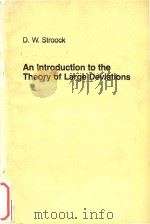
- An introduction to the theory of large deviations
- 1984 SpringVerlag
-
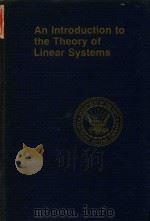
- An introduction to the theory of linear systems
- 1977 [Dept. of the Navy
-
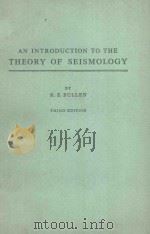
- AN INTRODUCTION TO THE THEORY OF SEISMILOGY
- 1963 CAMBRIDGE UNIV PR
-
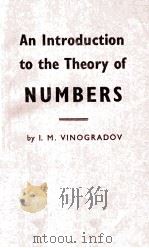
- An Introduction To The Theory of Numbers
- 1955 Pergmon Press
-

- AN INTRODUCTION TO THE THEORY OF AIRCRAFT STRUCTURES
- 1960 EDWARD ARNOLD(PUBLISHERS)LTD.
-

- AN INTRODUCTION TO THE THEORY OF NEWTONIAN ATTRACTION
- 1961 AT THE UNIVERSITY PRESS
-

- AN INTRODUCTION TO THE THEORY OF RELATIVITY
- 1964 BUTTERWORTHS
-

- AN INTRODUCTION TO THE THEORY OF VIBRATING SYSTEMS
- 1961 OXFORD AT THE CLARENDON PRESS
-

- AN INTRODUCTION TO THE MODERN THEORY OF EQUATIONS
- 1930 THE MACMILLAN COMPANY
-
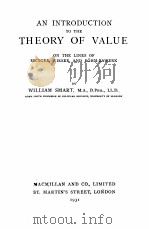
- AN INTRODUCTION TO THE THEORY OF VALUE
- 1931 MACMILLAN AND CO.
-
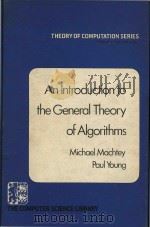
- An introduction to the general theory of algorithms
- 1978 NorthHolland
提示:百度云已更名为百度网盘(百度盘),天翼云盘、微盘下载地址……暂未提供。➥ PDF文字可复制化或转WORD
